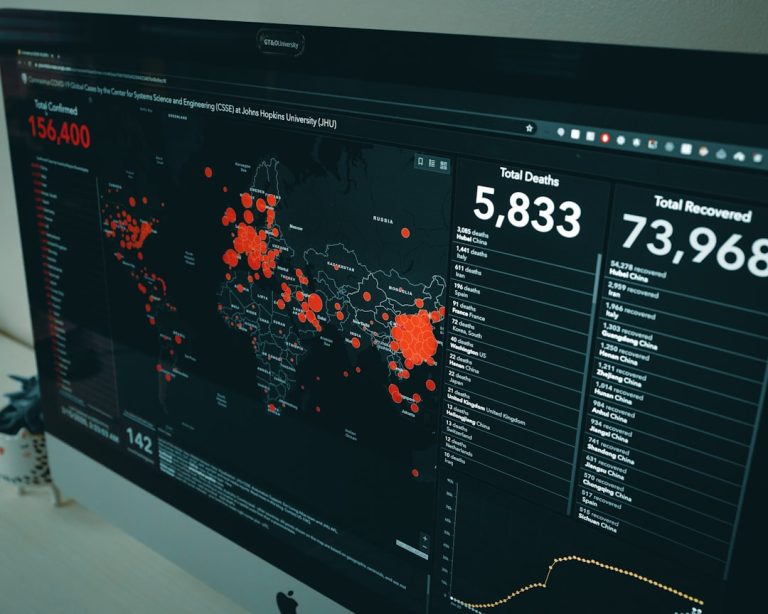Neural networks, a cornerstone of modern artificial intelligence, are computational models inspired by the human brain’s architecture. At their core, these networks consist of interconnected nodes, or neurons, which process information in a manner reminiscent of biological neural networks. Each neuron receives input signals, applies a transformation through an activation function, and passes the output to subsequent layers of neurons.
This layered structure allows neural networks to learn complex patterns and representations from data, making them particularly effective for tasks such as image recognition, natural language processing, and even game playing. The fundamental building blocks of neural networks include input layers, hidden layers, and output layers, each serving a distinct purpose in the information processing pipeline. The power of neural networks lies in their ability to learn from vast amounts of data.
By adjusting the weights of connections between neurons during the training process, these networks can minimize the difference between predicted outputs and actual outcomes. This learning process is often facilitated by algorithms such as backpropagation, which systematically updates weights based on the error gradient. As neural networks are exposed to more data, they become increasingly adept at recognizing intricate patterns and making predictions.
This adaptability is what sets neural networks apart from traditional algorithms, which often rely on predefined rules and heuristics. Consequently, neural networks have emerged as a dominant force in various fields, driving advancements in technology and reshaping industries.
Key Takeaways
- Neural networks are a type of machine learning model inspired by the human brain, consisting of interconnected nodes that process and analyze data.
- Training neural networks involves feeding them with large amounts of data to adjust the weights and biases of the connections between nodes, allowing them to make accurate predictions.
- Optimizing neural networks involves techniques such as regularization, dropout, and batch normalization to improve their performance and prevent overfitting.
- Applying neural networks to real-world problems can include tasks such as image recognition, natural language processing, and financial forecasting.
- Exploring advanced neural network architectures involves techniques such as convolutional neural networks, recurrent neural networks, and generative adversarial networks to tackle more complex problems and generate realistic data.
- Ethical considerations in neural network development include issues such as bias in data, privacy concerns, and the potential impact on employment and society.
- Future developments in neural network technology may include advancements in explainability, interpretability, and the integration of neural networks with other technologies such as robotics and augmented reality.
Training Neural Networks
Training a neural network is a multifaceted process that involves feeding it data and allowing it to learn from that data through iterative adjustments. The initial step in this process is data preparation, which includes collecting, cleaning, and organizing the dataset to ensure it is suitable for training. This stage is crucial because the quality and quantity of data directly influence the network’s performance.
Once the data is ready, it is typically divided into training, validation, and test sets. The training set is used to teach the network, while the validation set helps fine-tune hyperparameters and prevent overfitting. The test set serves as an unbiased measure of the network’s performance after training.
During training, the neural network undergoes numerous epochs—complete passes through the training dataset—where it continuously adjusts its weights based on the feedback received from its predictions. The loss function plays a pivotal role in this process by quantifying how well the network’s predictions align with the actual outcomes. By minimizing this loss function through optimization techniques such as stochastic gradient descent or Adam optimization, the network gradually improves its accuracy.
However, training can be computationally intensive and time-consuming, often requiring powerful hardware and specialized software frameworks. As a result, researchers and practitioners must carefully balance model complexity with available resources to achieve optimal performance.
Optimizing Neural Networks

Optimizing neural networks is essential for enhancing their performance and ensuring they generalize well to unseen data. One of the primary challenges in this optimization process is finding the right balance between underfitting and overfitting. Underfitting occurs when a model is too simplistic to capture the underlying patterns in the data, while overfitting happens when a model becomes too complex and starts to memorize the training data instead of learning from it.
Techniques such as regularization—where penalties are applied to overly complex models—can help mitigate overfitting by discouraging excessive weight magnitudes. Common regularization methods include L1 and L2 regularization, which add constraints to the weight updates during training. Another critical aspect of optimization involves hyperparameter tuning.
Hyperparameters are settings that govern the training process but are not learned from the data itself; they include learning rates, batch sizes, and the number of hidden layers. Finding the optimal combination of hyperparameters can significantly impact a model’s performance. Techniques such as grid search or random search can be employed to systematically explore different configurations.
Additionally, more advanced methods like Bayesian optimization or genetic algorithms can be utilized to intelligently navigate the hyperparameter space. By optimizing both model architecture and hyperparameters, practitioners can create robust neural networks capable of achieving high accuracy on diverse tasks.
Applying Neural Networks to Real-world Problems
| Problem | Neural Network Application | Outcome |
|---|---|---|
| Image Recognition | Convolutional Neural Networks (CNN) | High accuracy in identifying objects in images |
| Natural Language Processing | Recurrent Neural Networks (RNN) | Improved language translation and sentiment analysis |
| Financial Forecasting | Long Short-Term Memory (LSTM) Networks | More accurate predictions of stock prices and market trends |
| Medical Diagnosis | Deep Neural Networks (DNN) | Enhanced detection of diseases from medical images and patient data |
The versatility of neural networks has led to their widespread application across various domains, revolutionizing industries and enhancing everyday experiences. In healthcare, for instance, neural networks are being employed to analyze medical images for early detection of diseases such as cancer. By training on large datasets of annotated images, these models can identify subtle patterns that may elude human observers, thereby improving diagnostic accuracy and patient outcomes.
Furthermore, neural networks are also being utilized in drug discovery processes by predicting molecular interactions and optimizing chemical compounds, significantly accelerating research timelines. In addition to healthcare, neural networks have made significant strides in natural language processing (NLP), enabling machines to understand and generate human language with remarkable fluency. Applications such as chatbots, sentiment analysis tools, and language translation services rely heavily on advanced neural architectures like recurrent neural networks (RNNs) and transformers.
These models have transformed how businesses interact with customers and how individuals communicate across language barriers. Moreover, in sectors like finance and marketing, neural networks are employed for predictive analytics, helping organizations make informed decisions based on historical data trends. The ability to harness vast amounts of information has positioned neural networks as indispensable tools for solving complex real-world problems.
Exploring Advanced Neural Network Architectures
As research in artificial intelligence progresses, new architectures are continually being developed to enhance the capabilities of neural networks. Convolutional Neural Networks (CNNs) have gained prominence for their effectiveness in image processing tasks due to their ability to automatically detect spatial hierarchies in images through convolutional layers. These layers apply filters that capture local patterns while reducing dimensionality, making CNNs particularly suited for tasks like image classification and object detection.
The introduction of architectures like ResNet has further advanced this field by incorporating skip connections that allow gradients to flow more effectively during training, thus enabling deeper networks without suffering from vanishing gradient issues. Another groundbreaking development in neural network architecture is the advent of transformers, which have revolutionized natural language processing by allowing models to attend to different parts of input sequences simultaneously rather than sequentially. This attention mechanism enables transformers to capture long-range dependencies within text more effectively than traditional RNNs or LSTMs (Long Short-Term Memory networks).
Models like BERT (Bidirectional Encoder Representations from Transformers) and GPT (Generative Pre-trained Transformer) have set new benchmarks in various NLP tasks by leveraging large-scale pre-training followed by fine-tuning on specific datasets. As researchers continue to explore novel architectures and hybrid models that combine different approaches, the potential applications for advanced neural networks are expanding rapidly.
Ethical Considerations in Neural Network Development

As neural networks become increasingly integrated into society, ethical considerations surrounding their development and deployment have come to the forefront of discussions among researchers, policymakers, and technologists alike. One significant concern is bias in machine learning models; if a neural network is trained on biased data, it may perpetuate or even exacerbate existing inequalities in decision-making processes. For instance, facial recognition systems have faced scrutiny for exhibiting racial biases due to imbalanced training datasets that underrepresent certain demographic groups.
Addressing these biases requires a concerted effort to ensure diverse representation in training data and implement fairness-aware algorithms that actively mitigate discriminatory outcomes. Moreover, transparency and accountability in neural network applications are critical ethical considerations that cannot be overlooked. As these models become more complex and opaque—often described as “black boxes”—it becomes challenging for users to understand how decisions are made or predictions are generated.
This lack of interpretability raises concerns about trustworthiness in high-stakes applications such as criminal justice or healthcare where decisions can significantly impact individuals’ lives. Researchers are actively exploring methods for enhancing interpretability through techniques like explainable AI (XAI), which aims to provide insights into model behavior while maintaining performance levels. By prioritizing ethical considerations throughout the development lifecycle of neural networks, stakeholders can work towards creating responsible AI systems that benefit society as a whole.
Future Developments in Neural Network Technology
Looking ahead, the future of neural network technology promises exciting advancements that could further transform various fields and enhance human capabilities. One area ripe for exploration is unsupervised learning—a paradigm where models learn from unlabelled data without explicit supervision. As labeled datasets can be scarce or expensive to obtain, developing robust unsupervised learning techniques could unlock new possibilities for training neural networks on vast amounts of unlabeled information available online.
Innovations such as self-supervised learning have already shown promise by enabling models to generate labels from raw data itself, paving the way for more efficient learning processes. Additionally, the integration of neuromorphic computing—an approach that mimics the brain’s architecture at a hardware level—holds great potential for advancing neural network technology. By designing chips that emulate neuronal behavior and synaptic connections, researchers aim to create energy-efficient systems capable of processing information more like biological brains do.
This could lead to significant improvements in speed and efficiency for real-time applications such as robotics or autonomous vehicles. As interdisciplinary collaboration continues between computer science, neuroscience, and engineering fields, we can expect groundbreaking developments that will shape not only the future of neural networks but also our understanding of intelligence itself. In conclusion, neural networks represent a transformative force within artificial intelligence that has already begun reshaping industries and society at large.
From understanding their foundational principles to exploring advanced architectures and addressing ethical implications, it is clear that these models hold immense potential for solving complex problems across diverse domains. As we continue to innovate and refine our approaches to developing neural networks, it is imperative that we remain vigilant about their societal impact while striving for responsible AI practices that prioritize fairness, transparency, and inclusivity.
If you’re interested in learning more about the applications and implications of neural networks, it’s essential to understand the organizations behind these technologies. For a deeper insight into the team and philosophy driving current advancements in neural networks, consider visiting the “About Us” page of a tech-focused website. For instance, you can learn more about the team’s expertise and their mission in the field of artificial intelligence by clicking on this link: About Us – Bongoc. This page can provide valuable context about the people and the vision powering the development of neural networks.
FAQs
What are neural networks?
Neural networks are a type of machine learning algorithm that is inspired by the structure and function of the human brain. They consist of interconnected nodes, or “neurons,” that work together to process and analyze complex data.
How do neural networks work?
Neural networks work by taking in input data, processing it through multiple layers of interconnected neurons, and producing an output. Each neuron applies a mathematical operation to the input data and passes the result to the next layer of neurons.
What are the applications of neural networks?
Neural networks are used in a wide range of applications, including image and speech recognition, natural language processing, financial forecasting, and medical diagnosis. They are also used in autonomous vehicles, robotics, and many other fields.
What are the different types of neural networks?
There are several types of neural networks, including feedforward neural networks, convolutional neural networks (CNNs), recurrent neural networks (RNNs), and long short-term memory (LSTM) networks. Each type is designed for specific tasks and has its own unique architecture.
What are the advantages of using neural networks?
Neural networks are capable of learning and adapting to complex patterns in data, making them well-suited for tasks that involve large amounts of unstructured data. They can also handle non-linear relationships and are able to generalize from examples.
What are the limitations of neural networks?
Neural networks require a large amount of data for training and can be computationally intensive. They are also prone to overfitting, where the model performs well on the training data but poorly on new, unseen data. Additionally, neural networks can be difficult to interpret and explain.
















